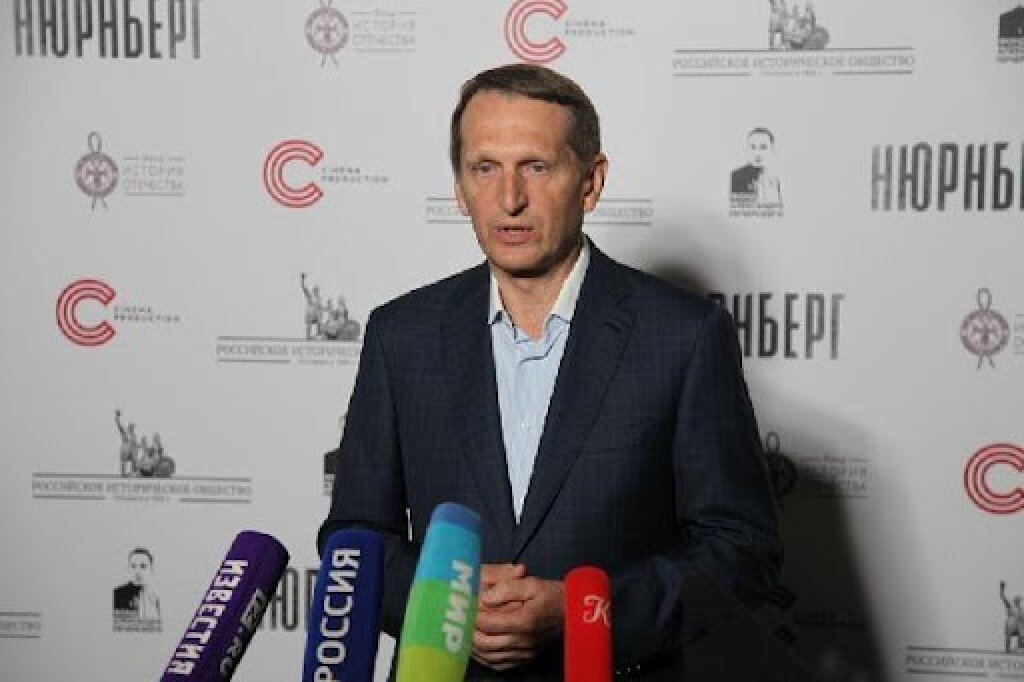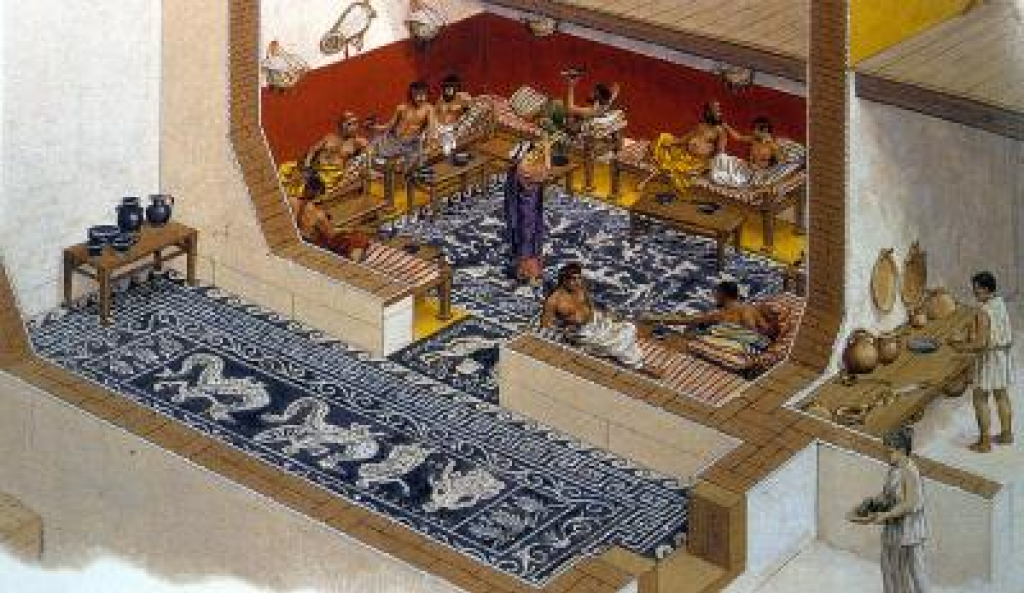We at the Jordan Center stand with all the people of Ukraine, Russia, and the rest of the world who oppose the Russian invasion of Ukraine. See our statement here.
Above: Naryshkin at Mosfilm in 2021.
Francine Hirsch (@FranHirsch) is Vilas Distinguished Achievement Professor of History at the University of Wisconsin-Madison. She is the author, most recently, of Soviet Judgment at Nuremberg: A New History of the International Military Tribunal after World War II (Oxford, 2020).
The Russian newspaper Kommersant quietly engaged in an act of resistance on Wednesday. The newspaper ran an interview with the director of the Russian Foreign Intelligence Service, Sergei Naryshkin, spouting all the usual propaganda. But on Twitter, alongside a link to the article, it ran a photo of Naryshkin with the word “Nuremberg” in the background.
This was a brilliant photo choice, subtly signaling that Naryshkin, like Putin and others in that circle, is a war criminal. Naryshkin, who studied at the Higher School of the KGB in the 1970s, has been in his current post since 2016. He has long been a member of Putin’s inner circle, serving at various points as the Kremlin chief of staff and as the chairman of the Russian State Duma.
The Kommersant photo was not photoshopped. It is an actual photo of Naryshkin taken in June 2021 when he visited the set of a Russian film about the Nuremberg Trials being shot at Mosfilm. Its origin in a real event is what makes its use here especially clever. The photo happened to be in the newspaper’s files.
Kommersant ran a different photo with the story on its official website, as did other Russian news agencies like TASS.
[gallery columns="2" size="full" ids="7533,7530"]
As Putin continues his brutal assault on Ukraine and as Russian soldiers commit atrocities in cities like Mariupol, it is fair to ask if a photo posted by the newspaper Kommersant really deserves our attention. I would argue that it does. Dissent has become a crime in Putin’s Russia, punishable with fines and jail time. The stunning display of bravery earlier this week by Marina Ovsyannikova, who disrupted a live news broadcast on Channel One Russia to protest the war, was a dangerous act. Ovsyannikova very publicly defied the state and put herself at great risk. But more subtle acts of protest deserve our attention as well. They might offer insight into how at least some Russians are thinking about the war.
Kommersant, founded during perestroika and transformed into a business daily in 1992, was long respected as one of Russia’s most independent newspapers. It went through a major shakeup in May 2019 when two of its star reporters were fired and the paper’s entire politics desk quit in protest. Kommersant maintained its reputation for solid reporting and ironic skepticism even as its writers and editors largely fell into line. The Russian State Duma’s introduction of strict censorship laws in early March, which prohibit the very mention of a “war” in Ukraine, poses a fresh challenge.
It is not unusual for Kommersant to run unflattering photos of Russian officials and world leaders alongside its stories. This type of editorial choice is what gives the outlet its edginess. Kommersant has continued this practice this week, especially on Twitter. But the decision to post a photo of Naryshkin with the word “Nuremberg” in the background is of a different order—and we should take note.
The photo suggests that some editors and staff members at Kommersant may be prepared to test the limits of state censorship. It also suggests that the idea of trying Putin and his inner circle for war crimes or for launching a war of aggression—something that international lawyers and diplomats have taken up in recent weeks—likely has resonance, not just in Ukraine, but also among the kinds of Russians who read Kommersant and follow it on social media.
The photo is also a reminder that, with the Russian media under strict state censorship, it is more important than ever to read newspapers between the lines—looking for the bits of truth that may be intentionally buried beneath the lede, deciphering coded language, and paying careful attention to the juxtaposition of images and text. This is a skill that political scientists and historians of Russia honed during Soviet times, understanding all too well that some of the most important messages would be hidden in plain sight.





